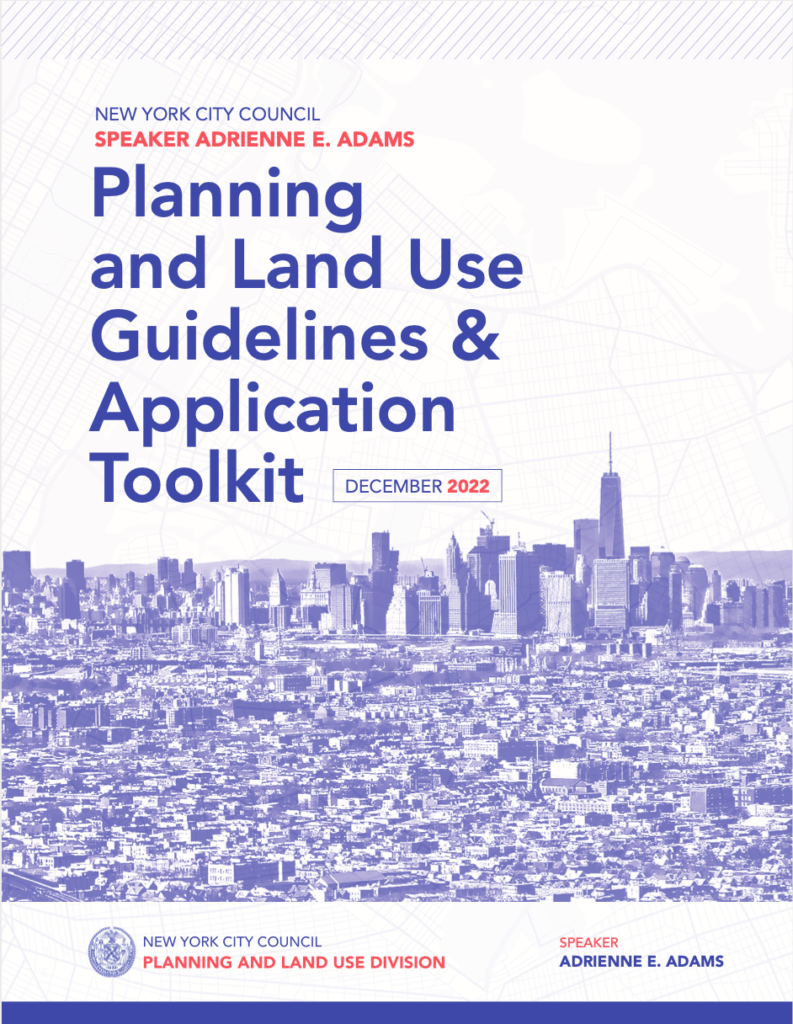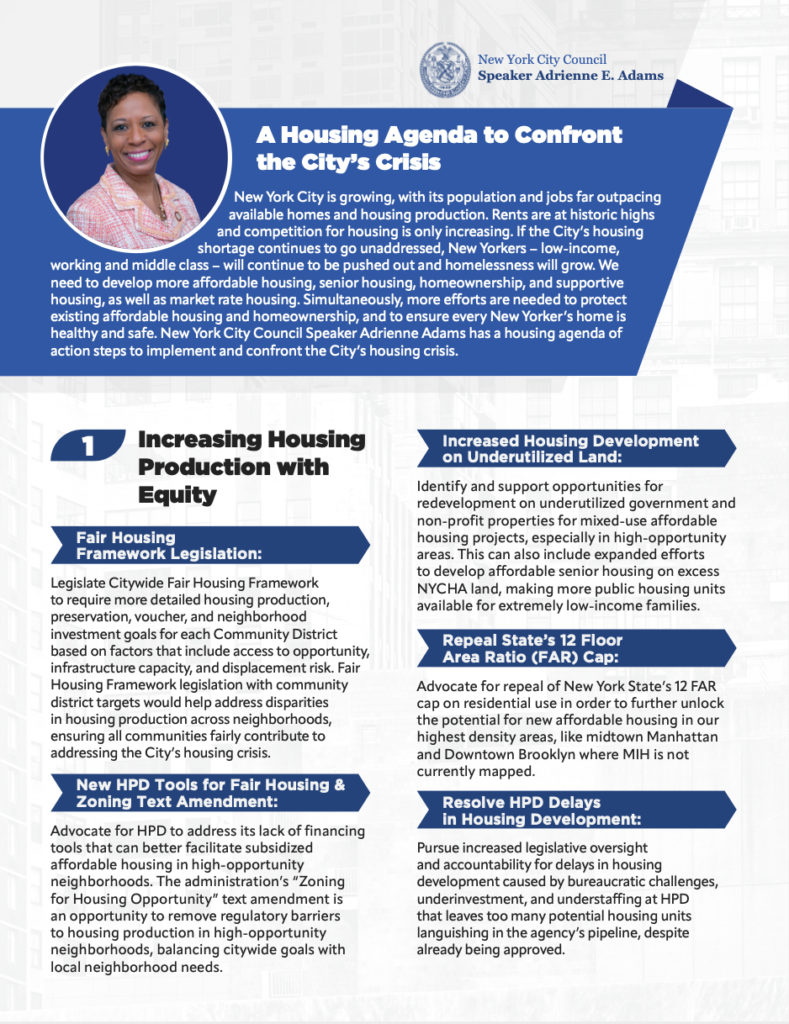Public Hearings
April 8, 2025- Subcommittee on Zoning and Franchises; 11:00 am – 250 Broadway, 16th Floor Committee Room, New York, NY, 100007
- 457 Nostrand Avenue Article XI Disposition
- 1134-1142 Pacific Street Article XI Disposition
- 2510 Coney Island Avenue Rezoning
You may submit written testimony to landusetestimony@council.nyc.gov. We will take written testimony up to 72 hours following the completion of the public hearing
April 17, 2025- Subcommittee on Zoning and Franchises; 11:00 am – 250 Broadway, 16th Floor Committee Room, New York, NY, 100007
You may submit written testimony to landusetestimony@council.nyc.gov. We will take written testimony up to 72 hours following the completion of the public hearing
For questions about accessibility or to request ASL, CART, or any other accommodations please contact EEO Officer at EEOOfficer@council.nyc.gov or call (212) 788-6936 at least three (3) business days before the hearing. If you need non-English language interpretation, please email translationservice@council.nyc.gov, at least three (3) business days before the hearing. Please include the following information in your email:
- Name and date of the hearing
- Your full name, telephone number, and email address
In-person hearings do not require pre-registration. For all other questions reference hearings, email hearings@council.nyc.gov or call 212-482-4219.
All individuals who wish to testify in person at City Hall must adhere to the following COVID-19 safety protocols:
- Properly wear a face covering at all times while in City Hall;
- Maintain physical distancing of 6 feet from others at all times except when not feasible in limited circumstances; and
- Complete a COVID-19 health screening questionnaire, which will be posted at the entrance to City Hall, prior to entering the building.
City of Yes for Housing Opportunity
On November 21, 2024, the Subcommittee on Zoning and Franchises and Committee on Land Use voted to approve this application with modifications, which are summarized in the document below:
Summary of Council Modifications
New York City Council held a Hybrid Public Meeting on October 21, 2024 and a Public Hearing on October 22, 2024 both at the Subcommittee on Zoning & Franchises.
| PUBLIC MEETING – Held October 21, 2024
The Council held a public meeting on this item at the subcommittee on zoning and franchises on October 21st. To view a recording of the October 21st public meeting on City of Yes for Housing Opportunity please see Subcommittee on Zoning and Franchises Public Meeting on City of Yes for Housing Opportunity, Oct 21, 2024 |
PUBLIC HEARING – Held October 22, 2024
The council held a public hearing on this item at the subcommittee on zoning and franchises on October 22nd. To view a recording of the public hearing and all information for the October 22nd public hearing please see Subcommittee on Zoning & Franchises, Public hearing on City of Yes for Housing Opportunity, Oct 22, 2024 |
For more information on the City of Yes for Housing Opportunity text amendment please see these useful materials and links:
- City of Yes for Housing Opportunity Presentation
- Department of City Planning webpage – City of Yes, Housing Opportunity
- DCP Housing Opportunity Guide
- City of Yes Housing Opportunity text amendment City Planning Commission report
- City Planning Commission approved text amendment to the Zoning Resolution
City of Yes: Zoning for Economic Opportunity
Summary of Council Modifications and Commitments
Use link above for summary of the eighteen “City of Yes” Zoning for Economic Opportunity (ZEO) citywide text amendment proposals and, where applicable, the final modifications made by the New York City Council, as well as related planning and policy commitments.
Summary of Proposal 18 – New “M” Districts (with Council Mods)
Highlighted Content:

Speaker Adrienne Adams’ Planning & Land Use Guidelines and Toolkit
Comprehensive planning must be featured throughout the land use process. Speaker Adams’ Planning and Land Use Toolkit provide Council Members, local communities, city agencies, and developers with a framework for improving the land use process to balance local community priorities with citywide needs. A pathway to increase housing production, affordability and equity is needed for our city.

Housing Agenda to Confront the City’s Crisis
New York City is growing, with its population and jobs far outpacing available homes and housing production. Rents are at historic highs and competition for housing is only increasing. If the city’s housing shortage remains unaddressed, New Yorkers will continue to be pushed out and homelessness will grow.
We need to develop more affordable housing, senior housing, homeownership, and supportive housing, as well as market rate housing. Simultaneously, more efforts are needed to protect existing affordable housing and homeownership, and to ensure every New Yorker’s home is healthy and safe.
Community Engagement
Click on a link below to learn more about community engagement efforts that the City Council Planning and Land Use Division is currently supporting.
Land Use Committee
The Council’s Land Use Committee has jurisdiction over all the types of actions listed above. The committee also has two subcommittees, each with its own Chair, that take care of specific sets of issues:
A rezoning, for instance, would be handled by the Zoning and Franchises subcommittee, while the designation of a landmark would be handled by the Landmarks, Public Sitings, and Dispositions subcommittee.
Links to Legistar:
- Committee on Land Use
- Subcommittee on Zoning and Franchises
- Subcommittee on Landmarks, Public Sitings, and Dispositions
The Planning & Land Use Division
The Council has a dedicated team of city planners, attorneys, and administrative staff that support Council Members and the Land Use Committee. This division helps the committee Chairs conduct hearings and analyze land use issues on behalf of Council Members.
The Division was formerly known as the Land Use Division. City Council Speaker Adrienne Adams changed the name to the Planning & Land Use Division because planning must be at the forefront of the land use process. Planning means understanding the conditions and challenges facing our city and its neighborhoods, identifying shared goals and principles, and applying the policies to address and achieve them. Planning means being intentional about our future and making sure that our decisions collectively align with these goals. And last but not least planning requires meaningful and deep engagement of communities in this work.
Before applications for land use changes begin public review and eventually reach the Council, there should be a planning process that involves understanding the conditions of the affected area and engaging stakeholders including Administration agencies and community members including residents and elected officials.
Zoning
Zoning controls what property owners can do with their land (such as build apartments or a factory) as well as how large buildings can be. When the Mayor or a developer wants to change the zoning, they must go through a public review process involving hearings at the Community Board, the Borough President, the City Planning Commission, and City Council. The Council has the final say in whether the zoning is changed.
Landmarks
The Landmarks Preservation Commission designates landmarks and historic districts. The Council can approve, modify, or disapprove the Commission’s decision. Once a building is “landmarked,” the owner must apply for permission to alter the façade, to build additions, or to demolish the building
City Land & Public Facilities
The City often buys, sells, or leases real estate for a specific purpose, such as building a new school, renting an office for an agency, or buying land upstate to protect the City’s water supply. Or the City might sell land to a business so they can expand and employ more people. Or the City might give land to a developer building affordable housing, often with tax exemptions that make the apartments even more affordable. When the City buys or sells land, or gives a tax exemption, the Council can approve or disapprove these actions.
The Land Use Process at the Council Stage of ULURP
Step 1: Submission of Application to Council
Whenever any of the above actions takes place, the Council receives an application explaining the project. Council Members and staff then analyze the application and its potential consequences for the city as a whole, as well as for the local community.
Step 2: Council Hearing
When the Council receives a land use application, it’s referred to the appropriate subcommittee, which then holds a public hearing and votes on the application.
Step 3: Land Use Committee
After the subcommittee has heard and voted on the application, the Land Use Committee meets and votes on the application.
Step 4: Council Vote
The City Council will then hold a meeting with all 51 members and will vote on the application as a body.
Step 5: Mayoral Approval or Veto
The Mayor may either accept or veto the Council’s decision. However, the Council may override the Mayor’s veto with a 2/3 vote.
